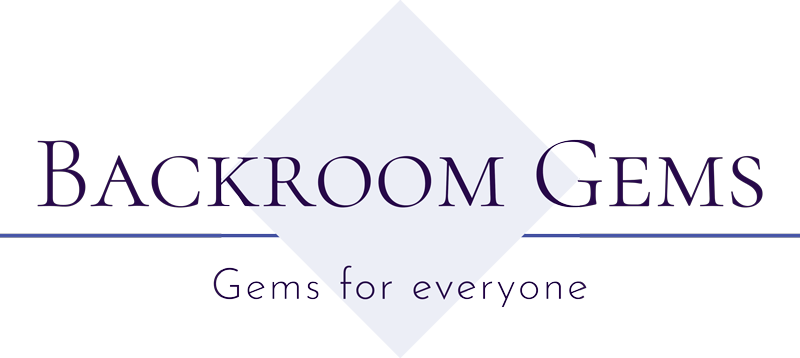September Birthstones: Which Side are You On?
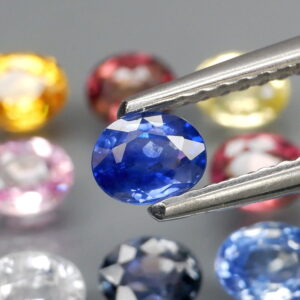 For most Virgos and Libras, sapphire has been engrained in your mind and placed in your jewelry boxes for your entire lives. Those aware that this gem comes in a whole rainbow of colors or are fans of the color blue may not have an issue with this, but what about those who want to be different yet still want to represent their birth sign? Don’t worry, there’s a gem for you! Moonstone is the other birthstone for September and has plenty of history and unique traits that enable it to be a worthy adversary for all the Virgos and Libras out there.
For most Virgos and Libras, sapphire has been engrained in your mind and placed in your jewelry boxes for your entire lives. Those aware that this gem comes in a whole rainbow of colors or are fans of the color blue may not have an issue with this, but what about those who want to be different yet still want to represent their birth sign? Don’t worry, there’s a gem for you! Moonstone is the other birthstone for September and has plenty of history and unique traits that enable it to be a worthy adversary for all the Virgos and Libras out there.
First, let’s look at the “star” of the show and why it has been a beloved gem for centuries.
Sapphire is one of the two gem varieties of corundum (the other being ruby) that is typically seen in blue, but occurs naturally in a full rainbow of colors, with red being the exemption. Corundum is an allochromatic gemstone, meaning it gets its color from a variety of elements in its chemical structure. Without any of these impurities, the mineral would be colorless.  Rubies get their red color from traces of chromium, while a plethora of other trace elements give sapphires a wide range of colors. There are several types within the sapphire umbrella such as star and parti, all displaying amazing vitreous lusters. The star sapphire has been referred to as the “Stone of Destiny” by Christians, associating the three crossbars of the star with faith, hope, and destiny. Corundum star stones have three crossbars and six rays, while other gem types, like garnets, display stars with two crossbars and four rays. Star sapphires were often used as talismans for protection from illnesses and bad omens while traveling. According to legend, the gem could ward off the evil eye and scare away devils.
Rubies get their red color from traces of chromium, while a plethora of other trace elements give sapphires a wide range of colors. There are several types within the sapphire umbrella such as star and parti, all displaying amazing vitreous lusters. The star sapphire has been referred to as the “Stone of Destiny” by Christians, associating the three crossbars of the star with faith, hope, and destiny. Corundum star stones have three crossbars and six rays, while other gem types, like garnets, display stars with two crossbars and four rays. Star sapphires were often used as talismans for protection from illnesses and bad omens while traveling. According to legend, the gem could ward off the evil eye and scare away devils.
Sapphires are thought to symbolize wisdom, good fortune, virtue, and holiness for royals as well as meaning faithfulness and sincerity in an engagement ring setting. In the Middle Ages, the Pope began the tradition of giving sapphire rings to bishops and cardinals. The gems were thought to be a link to Heaven and promoted purity of thought that is required by those in these religious professions. Tiffany & Co. published a Gregorian birthstone poem in 1870 that paid tribute to the beliefs surrounding the sapphire gem.
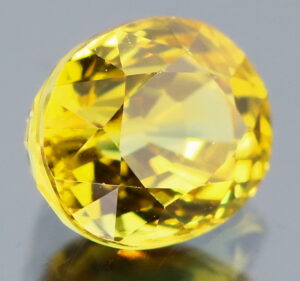 A maiden born when September leaves
A maiden born when September leaves
Are rustling in September’s breeze,
A sapphire on her brow should bind’
Twill cure diseases of the mind.
In that same spirit, it is said that the wisdom of King Solomon came from the sapphire ring that he wore, with which he would stamp his seal into official documents. In the 1930s, de Beer’s advertising campaign “A Diamond is Forever” caused colored gems to dwindle in popularity for engagement settings. However, Prince Charles’ presentation of a large sapphire ring to Lady Diana in 1980 caused many to replicate the proposal and use sapphires in their engagement rings. Sapphires are also the anniversary gift for the 45th year and are representative of the jubilee that occurs after 65 years of an event. This was coined in celebration for Queen Elizabeth II’s 65-year reign in 2017.
Now we can talk about moonstone!
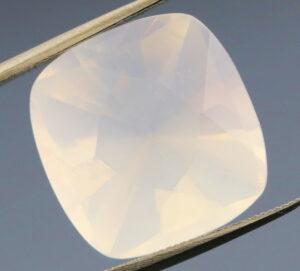 Moonstone is a variety of feldspar in the mineral group orthoclase. During formation, orthoclase and albite separate into alternating layers, and when light diffracts between them, it produces a phenomenon called adularescence where a ghostly sheen moves under the surface, like moonlight glowing in water. This also popularly occurs in labradorite and sanidine. It occurs in shades of ethereal white, blue, and even pale peach and yellow hues—just like the moon in all its phases. The form possessed with the most mystical properties is also the rarest. This is the clear stone with a blue shimmer that seems to be both inside and outside the stone at the same time, like a moon glow.
Moonstone is a variety of feldspar in the mineral group orthoclase. During formation, orthoclase and albite separate into alternating layers, and when light diffracts between them, it produces a phenomenon called adularescence where a ghostly sheen moves under the surface, like moonlight glowing in water. This also popularly occurs in labradorite and sanidine. It occurs in shades of ethereal white, blue, and even pale peach and yellow hues—just like the moon in all its phases. The form possessed with the most mystical properties is also the rarest. This is the clear stone with a blue shimmer that seems to be both inside and outside the stone at the same time, like a moon glow.
According to Hindu mythology, and also believed by the Romans and Greeks, moonstone is made up of solidified moonbeams and are closely associated with their lunar deities. Ancient Romans believed that the image of Diana the Hunter, goddess of the moon, was hidden within every moonstone. India had a similar belief believing that there was a lucky spirit that lived in each and every moonstone, bringing luck and good fortune to whoever possesses it. Perhaps this is where the phrase “the man in the moon” originated? Although I’m sure Harry Chapin wasn’t thinking about moonstone when he was writing “Cat’s in the Cradle” … or was he? Many believe that wearing a moonstone can enhance your intuition as well as spark passion between lovers and promote fertility, especially if worn during a full moon. This kind of fertility works well for plants as well! If you plant the gem in your garden of flowers or veggies during a full moon, it will ensure a good harvest. No more early morning farmer’s market trips for zucchinis! 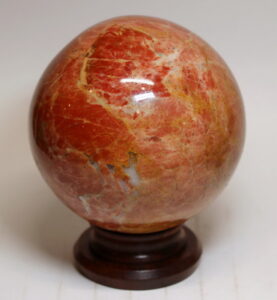 Moonstone is also thought to be a symbol of light and hope and represents inner clarity.
Moonstone is also thought to be a symbol of light and hope and represents inner clarity.
In 1970, the moonstone was designated as the official Florida state gemstone in honor of the moon landings that took off from Kennedy Space Center. It is a special way to pay homage to a historic event, even though the gem does not naturally occur in Florida. While the most valuable, transparent moonstones have come from Myanmar in the past, most come from Sri Lanka today.
Both of these gems have unique spiritual connections as well as physical properties that can benefit the wearer. Ultimately, it’s up to you what is valued more in your life and which gem you are drawn to. While sapphires have a classic beauty with historical reference, moonstones have a more unconventional exquisiteness that should not be overlooked. No matter which gem you choose to represent your September birth date, be sure to come see us at Backroom Gems for all of your gemstone needs!
